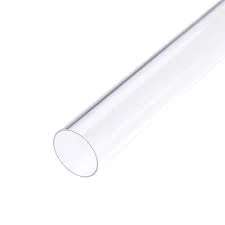డిసెం . 06, 2024 01:31 Back to list
2011 Guidelines for High-Density Polyethylene Pipe Applications and Standards
Understanding DR and HDPE Pipe Specifications
In the world of piping systems, particularly for water supply and drainage, the terms “DR” (Dimension Ratio) and “HDPE” (High-Density Polyethylene) are commonly encountered. These specifications are paramount in ensuring the pipes meet the necessary standards for durability, pressure resistance, and installation efficiency. This article delves into the significance of DR in HDPE pipes and explores their applications, advantages, and factors to consider when selecting the right HDPE piping for various projects.
What Is DR in HDPE Pipes?
The Dimension Ratio (DR) is a critical measure used in piping systems to express the relationship between a pipe’s average wall thickness and its outer diameter. Specifically, DR is calculated as the outer diameter of the pipe divided by the wall thickness. This ratio provides useful insights into a pipe's strength and flexibility, as a lower DR indicates a thicker wall and typically means the pipe is more capable of withstanding internal pressure.
For HDPE pipes, DR values usually range from 5 to 26, with lower values signifying more robust pipes. A common DR for many HDPE pipes used in water distribution systems is 11, which allows for a balance between strength and weight, making the pipes easy to handle while still providing adequate pressure resistance.
Applications of HDPE Pipes
HDPE pipes are versatile and can be used in various applications, including
1. Water Supply HDPE is commonly used for potable water supply systems due to its high resistance to corrosion and chemical leaching. The flexibility of HDPE also allows for installation in challenging terrains.
2. Sewage Systems The durability and resistance of HDPE pipes against chemical substances make them ideal for sewage and stormwater drainage systems.
3. Irrigation Due to its lightweight nature and flexibility, HDPE piping is widely used in agricultural irrigation systems.
4. Telecommunication and Electrical Conduits HDPE pipes are used as protective conduits for electrical lines and fiber optics since they prevent moisture ingress and provide physical protection.
Advantages of HDPE Pipes
dr 11 hdpe pipe

1. Corrosion Resistance Unlike traditional materials like steel or cast iron, HDPE does not corrode when exposed to the elements, making it ideal for buried applications.
2. Lightweight and Flexible HDPE pipes are significantly lighter than metal pipes, which cuts down transportation and installation costs. Their flexibility also allows for easy maneuvering around obstacles.
3. Long Lifespan HDPE can last over 50 years with proper installation and maintenance, providing long-term reliability and reducing the need for frequent replacements.
4. Reduction in Leakage The continuous lengths of HDPE pipes substantially minimize the number of joints needed, leading to reduced chances of leaks.
5. Eco-Friendly HDPE is recyclable, making it a more sustainable choice for piping systems.
Selecting the Right HDPE Pipe
When selecting the appropriate HDPE pipe for a project, several factors must be taken into consideration
1. Determine the Pressure Requirements Assess the system’s pressure and select an appropriate DR value that can handle the expected pressure without risk of failure.
2. Consider Environmental Conditions The temperature, soil conditions, and chemical exposure will influence the choice of thickness and type of HDPE material required.
3. Installation Method Depending on the installation method (e.g., trenchless, open-cut), the flexibility and strength of the chosen HDPE pipe will be crucial.
4. Compliance with Standards Ensure the selected HDPE pipes meet local and international standards, making them suitable for the intended application.
In conclusion, understanding the Dimension Ratio and the characteristics of High-Density Polyethylene pipes plays a pivotal role in the successful design and implementation of piping systems in various applications. With their numerous advantages, HDPE pipes continue to be a favored choice across industries, addressing modern infrastructure needs efficiently and sustainably. Whether for water supply, sewage systems, or irrigation, the role of DR and HDPE specifications remains central to effective piping solutions.
-
HDPE Natural Sheet: Durable, Food-Grade & Versatile Plastic Solutions
NewsAug.27,2025
-
Durable Glossy PVC Rigid Sheet | Premium High-Shine Panels
NewsAug.26,2025
-
Durable PP Rigid Sheet: Lightweight, Chemical Resistant Solutions
NewsAug.21,2025
-
PVC Grey Sheet for Extraction: Chemical Resistant & Durable
NewsAug.19,2025
-
Durable PVC Pipe Fittings for Plumbing & Irrigation Needs
NewsAug.18,2025
-
HDPE Steel Belt Reinforced Spiral Corrugated Pipe | High Strength
NewsAug.17,2025

